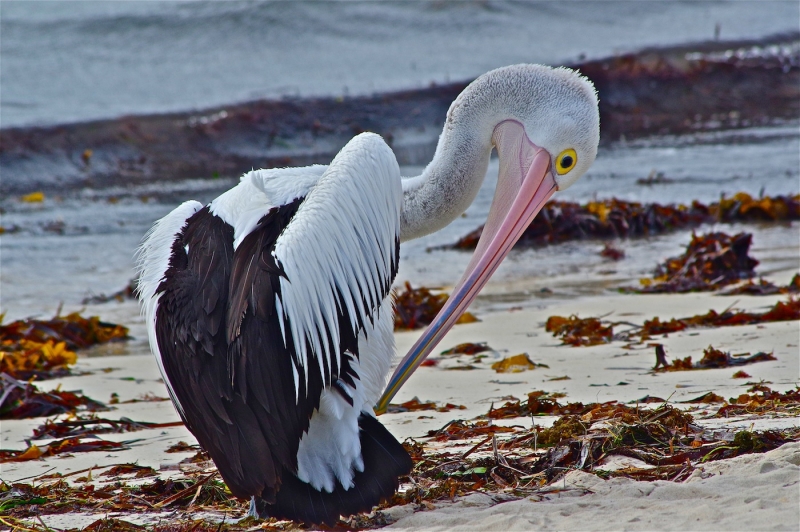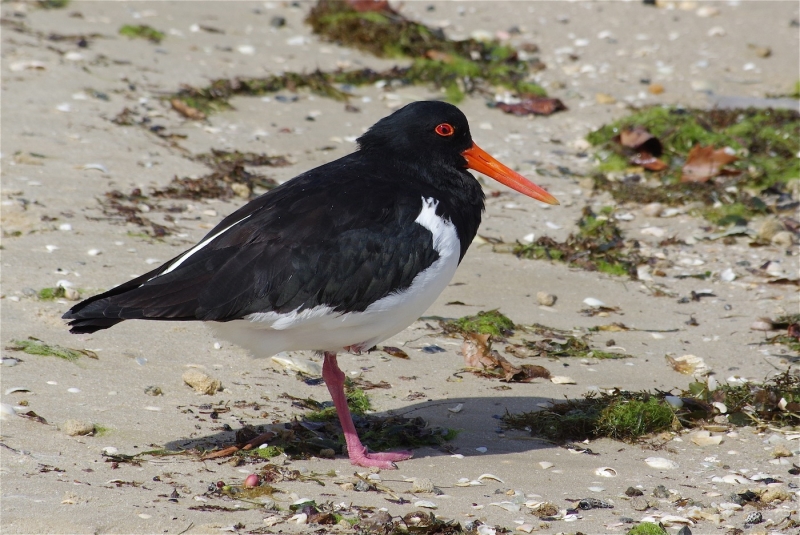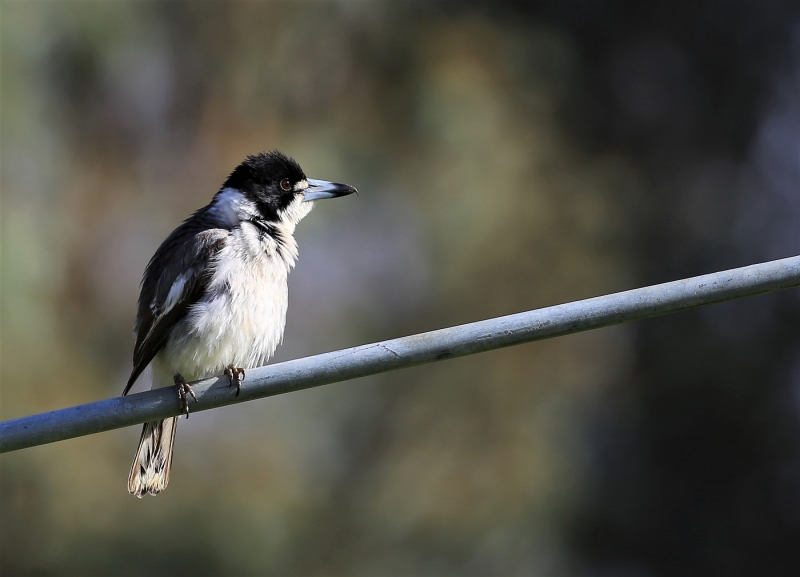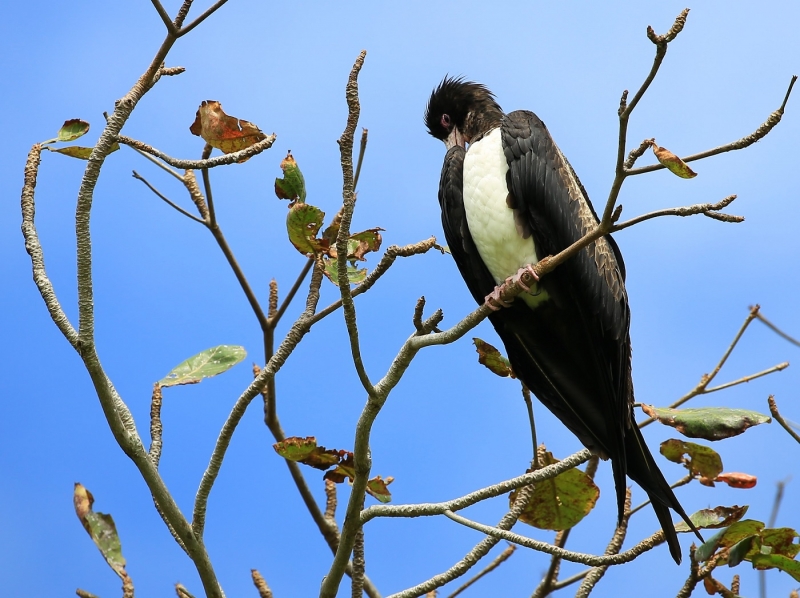Thank you for inviting me to be your Mystery Reviewer. Whilst I have been seriously involved in photography for many years, having received numerous awards at local, national and international levels and judged many photographic competitions, I am not a “birder” or a specialist bird photographer or judge. So as with everyone who has entered, this competition is also a challenge for me.
My approach to photography is more a visual or pictorial one. Whilst the technical side of photography is clearly important, particularly in documentary photography such as bird photography, I usually look for things such as impact, visual appeal, creating emotion and composition.
The subject “Black and White Birds” is a challenging one, particularly for those who have limited photographic experience or don’t have sophisticated equipment. The specific challenge here is to achieve a well-balanced exposure. The brief for this competition is a technical one, particularly in terms of exposure, by not blowing out white areas whilst achieving some detail in the black areas. Difficult indeed. Accordingly, I have focused on these technical issues, although I have also looked at the visual aspects of each image.
Everyone who has entered this competition at an entry level is to be congratulated for taking on such a difficult assignment. In order to grow as photographers, it is important to go outside our comfort zone and take on these challenges.
In looking through the images, the enormity of the challenge was obvious. Lack of detail in both black and white areas was a common failing. Very few were totally successful. I have always thought that understanding exposure and how to get it right in your camera settings is one of the more difficult but important aspects of photography. If images are captured in RAW there may be some ability to make corrections. However, great care must be taken in post processing. I noticed in some cases such an attempt had been made. Unfortunately thisresulted in artefacts being created. Using your histogram is very helpful in determining an acceptable exposure.
As I was looking through the images, I was reminded that as well technical issues, there are many ways of improving our photography which aren’t dependent on our technical knowledge or our equipment. The ability to identify our subject and isolate it and simplify the composition to avoid distraction or confusion is important. Understanding aspects of composition such as where to place your main subject, creating depth, achieving a balance, creating leading lines, etc. can bring about real improvement and help our images stand out from the crowd. I noticed that several images could have been improved by better placement of the main subject. Don’t forget to use the crop tool to achieve a tighter composition where this is called for. Also, try and move in as close as you can. As the acclaimed photo journalist Robert Capa said, “If your photos aren’t good enough, you’re not close enough”. Avoid having your subject too small in the frame unless there is a good reason for doing so. Understanding light, its quality and direction and how it affects your subject is most important.
After a careful examination of all the images, I short listed five images that I considered best meet the requirements of the composition. From the shortlist, I have selected a winner and four commendations. Here are my results.
Winner: Australian Pelican - Douglas Coughran (Image ID 24701)
The technical quality is of a high standard. The overcast conditions have allowed for great detail in not only the wing feathers but also in the neck beak and eye. The colour balance is excellent. The pelican has been well isolated from the background to avoid distraction. I like the muted colour palette. However, it is the position of the bird that sets it apart from the other finalists. The angle of the beak and the way the pelican is looking down it gives the image an extra dimension. Very well done.
Highly Commended: Australian Pied Oystercatcher - Douglas Coughran (Image ID 24652)
This image comes a close second. It is sharp with good feather detail. Nothing blown-out. The colour contrast between and orange beak and eye with the black and white body of the bird provides strong visual impact. The harsh lighting conditions have been well handled with detail retained in the shadow under the bird. Where it loses out in relation to the winner is that the birds is static. Standing on one leg with the other tucked into the body is an interesting characteristic but for me is not enough. Still a great effort.
Commended: Grey Butcherbird - Deanne Gaskill (Image ID 25217)
An impressive image. To capture this bird with such sharpness and clarity is a real achievement. There is great detail in all areas. The eye is in sharp focus with a strong highlight. I enjoy the intense look on the bird. The perch works both for and against the image. The angle is great. However, there is so much of it that it for me it becomes a little visually dominating. I think some cropping may have helped by reducing both it and the negative space to make it a stronger image. This is very subjective, isn’t it?
Commended: Australian Pelican – Douglas Coughran (Image ID 24653)
This is one of my favourites. I love the synchronized preening. Very well captured. I just feel the detail in the birds could have been brought out a little bit more.
Commended: Christmas Island Frigatebird - Deanne Gaskill (Image ID 25216)
This has a lot going for it. Good capture of the preening with good detail in the upper part of the bird and in the branches. It is very busy but this is its environment. It has colour impact. Well done.
Before I conclude, I would like to comment on two further images. Whilst they may have fallen short of the technical standard required, I found a lot to like about them.
Special Mention: Australian Magpie - McKinley Moens (Image ID 25245)
I find this image very cute. I like the way the two magpies are standing together intently looking at something. What is the story here? One bird is older. Are they mother and child? Is there a connection? I enjoy images that tell a story or asks questions.
Special Mention: Australian Pelican - Brian Hale (Image ID 24831)
This image appeals to my artistic senses. I can see it as a large print in a frame on a wall. I know it is dark and under exposed. That’s what I like about it - It makes the pelican stand out.
[The version of this article which appeared in our August 2017 Newsletter has some additional images, with alternative croppings or processing suggested by this Mystery Reviewer.]













